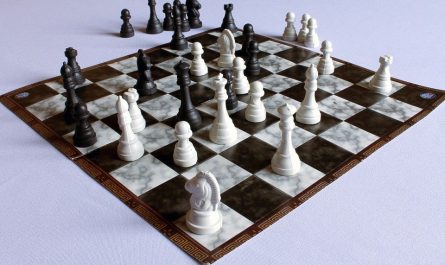In chess, the rook stands as a formidable force, capable of unleashing devastating attacks and exerting pressure on opponent positions. One of the most potent maneuvers involving rooks is doubling them on open files. This strategic concept allows players to consolidate their rooks’ power, create threats, and assert control over critical areas of the board. In this guide, we will delve deep into the art of rook doubling, exploring strategic considerations, tactical nuances, and practical examples to elevate your understanding and mastery of this dynamic chess maneuver.
Understanding Rook Doubling on Open Files
Before we delve into the strategies and techniques associated with rook doubling, it’s essential to grasp the fundamentals of open files and their significance in chess.
Open Files: The Pathway to Domination
An open file is a column on the chessboard devoid of any pawns from either side. Open files serve as highways for the rooks, allowing them to penetrate deep into enemy territory and exert influence over critical squares.
Rook Doubling: Unleashing Combined Power
Rook doubling occurs when two rooks from the same side occupy the same open file, often doubling their firepower and creating formidable threats against the opponent’s position.
Strategies for Rook Doubling
1. Occupy Key Open Files Early:
Establish control over critical open files as early as possible in the game. Look for opportunities to contest and occupy open files, denying them to your opponent’s rooks.
2. Coordinate Rook Placement:
Position your rooks strategically on open files, ensuring they support each other’s actions and reinforce the threats posed to the opponent’s position.
3. Exerting Pressure:
Once rooks are doubled on open files, exert pressure on the opponent’s position by targeting weak pawns, squares, or pieces. Create threats that force the opponent to allocate resources defensively.
4. Initiating Pawn Breaks:
Use rook doubling as a prelude to pawn breaks, especially in positions where pawn structures can be compromised. Pawn breaks can create weaknesses in the opponent’s position, further amplifying the impact of rook doubling.
5. Supporting Pawn Advances:
Support pawn advances that aim to open lines or create passed pawns. Doubled rooks can provide invaluable support to advancing pawns, enhancing their effectiveness and amplifying the pressure on the opponent.
Tactical Considerations
1. Leveraging Pins and Forks:
Doubled rooks can exploit tactical motifs such as pins and forks, targeting opponent pieces and creating decisive threats. Look for opportunities to capitalize on tactical vulnerabilities exposed by rook doubling.
2. Exploiting Back-Rank Weaknesses:
Rook doubling often exposes the opponent’s back-rank weaknesses, creating opportunities for tactical strikes or mating threats. Keep an eye on potential back-rank vulnerabilities and exploit them when the time is right.
3. Initiating Sacrifices:
In dynamic positions, consider sacrificing material to open lines or create tactical opportunities. Sacrifices involving doubled rooks can lead to decisive breakthroughs or force concessions from the opponent.
Practical Examples
Example 1: Kasparov vs. Karpov (World Chess Championship, 1985)
In their legendary encounter, Garry Kasparov demonstrated the power of rook doubling on open files, relentlessly pressuring Anatoly Karpov’s position and eventually clinching victory.
Example 2: Fischer vs. Spassky (World Chess Championship, 1972)
Bobby Fischer’s masterful use of rook doubling in his World Chess Championship match against Boris Spassky showcased the strategic depth and dynamic potential of this maneuver.
Conclusion: Elevating Your Game with Rook Doubling
Rook doubling on open files is a cornerstone of strategic play in chess, allowing players to consolidate their rooks’ power and exert pressure on the opponent’s position. By understanding the methods and tactics related with rook doubling, players can take their game to the next level, unleashing deadly attacks and taking board control. Incorporate these principles into your arsenal, study classic games, and practice diligently to unlock the full potential of rook doubling in your chess endeavors. As you navigate the complexities of the chessboard with finesse and precision, rook doubling will emerge as a potent weapon in your arsenal, paving the way to victory and mastery in the royal game.


